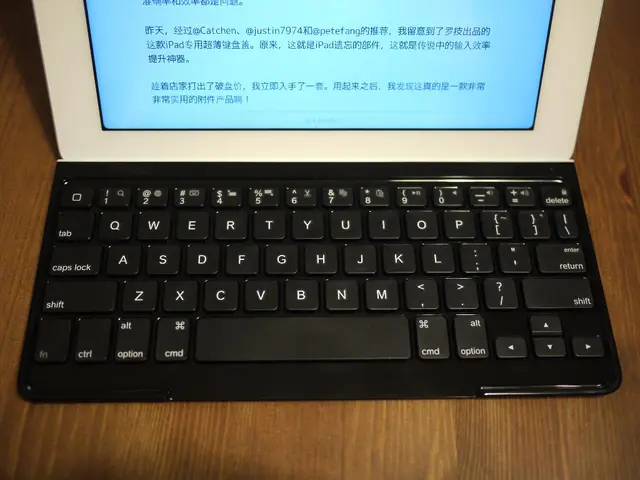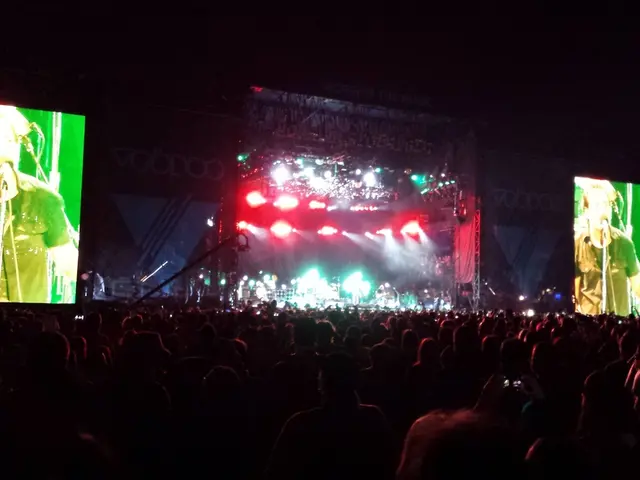The EcoFlow Stream: A Clever, High-Performing Balcony Power Storage System
Creative Balcony Energy Storage System Shows Innovative Thinking
By staying informed about energy dynamics, the EcoFlow Stream balcony power storage system leaves no energy wasted. With its smart integration of dynamic tariffs and self-produced electricity, it takes energy management to a whole new level. Here's what you need to know.
Efficient Energy Management with the EcoFlow Stream
Similar to large power plants, balcony power plants produce the most electricity when demand is low. The same applies to dynamic pricing, as energy costs are significantly less when there's a surplus of energy but low consumption. A smart solution is the EcoFlow Stream, a battery system that can efficiently store and distribute excess or low-cost energy within your home network.
ThREE Stream Models for Customized Solutions
The EcoFlow Stream offers three versions—Ultra, Pro, and AC Pro—each with a capacity of 1.92 kWh. These high-quality, modular devices are made from durable lithium iron phosphate cells (LiFePO4). They are designed to last up to 15 years and boast a warranty period of ten years.
The Stream Ultra
Priced at 950 euros, the Ultra comes equipped with a bidirectional inverter, four solar module connections (MPPT), and a maximum input power of 2000 W. The Ultra can supply up to 2300 W of alternating current (AC) to connected devices.
The Stream Pro
The Pro, a stripped-down version of the Ultra, features three solar connections and a maximum input power of 1500 W.
The Stream AC Pro
The AC Pro is a pure power storage system without solar module connections, acting as an expansion battery for other Stream models or charging via the home network.
A Stylish and Robust Design
With a tower design and a metallic finish, the EcoFlow Stream devices blend seamlessly into your home. Despite their robust build and spacious size (28 × 25 × 46 cm), they are easy to integrate into your living space and don't draw too much attention. A slight inconvenience is that the LED strips indicating charge level cannot be turned off at night.
Dust- and water-resistant to IP65, these streamlined batteries can be moved if needed. Wall brackets are provided for secure positioning, and an integrated heating function ensures operation down to -20 degrees Celsius.
A Breeze to Set Up
The EcoFlow Stream was tested with a Stream Ultra and two Stream AC Pro units provided by the manufacturer. Setup is truly simple: connect the devices to solar modules (if applicable) and the home network via a standard Schuko power outlet. The devices are automatically recognized via the Ecoflow app, and firmware updates can be performed as needed.
Intelligent Cooperation for Increased Efficiency
The Stream system stands out for its ability to distribute power intelligently among connected devices. The unique feature is that batteries can communicate with each other via WLAN and automatically assign power as needed. This allows for up to 2000 W of power to be distributed.
For example, running an espresso machine (1200 W) or a washing machine in the 60-degree program (nearly 200 W) is possible, regardless of which battery the devices are connected to. Only under extremely high power demands, such as a 2500 W water boiler, will the fuse on the connected battery be tripped.
Charging with Solar Power or Dynamic Tariffs
In most households, it's advisable to charge the storage systems exclusively with solar power. Using additional grid power is pointless with fixed tariffs, as there's minimal cost savings compared to converting direct current to alternating current and back.
However, dynamic power tariffs change hourly based on market prices. In these cases, charging the battery during low-price periods (when there's a surplus of power) and using stored energy during high-price times brings significant savings. More than half of the total cost per kWh goes toward taxes, network charges, and other levies, making the pure work prices negative on many days during the year.
As of last October, only 7% of German households have a dynamic tariff, with estimates suggesting the number is even lower. Since this year, suppliers must offer dynamic tariffs, and network providers must supply the necessary intelligent power meters for their use, the number of households utilizing dynamic tariffs may soon rise.
Leveraging Price Fluctuations
Throughout the day, price fluctuations can be enormous. For example, on 3 June, the total price per kWh in Berlin ranged from just under 22 to 45 cents. To fully exploit these price differences, the EcoFlow app allows for the creation of an AI-supported plan that synchronizes charging times with a dynamic tariff. This plan includes solar and grid charging, storage discharge, and grid usage, ensuring maximum savings.
The TOU mode (Time-of-Use mode/Usage Time Mode), available at a cost of about 10 euros per month or 100 euros annually, offers additional analysis and solar forecasts. Alternatively, you can use a demand analysis using a Smart Meter from Ecoflow, though this requires a wireless connection to the meter within your home. Estimates can also be provided for devices not directly connected to a Stream storage device using smart plugs.
With AI-supported plans, the EcoFlow app performed flawlessly, intelligently managing energy use based on dynamic tariffs and solar power production, all while minimizing energy loss.
The EcoFlow Stream in Action
The EcoFlow Stream system proved to be an excellent complement to balcony power plants. By intelligently distributing generated and stored energy, it helped maximize energy efficiency and reduce costs. Although dynamic tariffs are currently only available to a few households, a well-sized battery storage system for a balcony power plant can still help save money for most households. In many cases, a Stream Ultra is sufficient to make a difference, costing around 950 euros. Depending on the average daily use of self-produced electricity, the costs can be recouped in about six and a half years at a total price of 40 cents in Germany.
Sources:
- ntv.de
- EcoFlow
- KliKlimaHaus
- German Federal Association of Consumer Centres
Key technology takeaways:
- Dynamic tariffs and self-produced electricity can lead to significant cost savings.
- The EcoFlow Stream offers three versions with a capacity of 1.92 kWh each, made from durable LFP cells with a lifespan of up to 15 years.
- The system intelligently integrates with solar power and dynamic tariffs, charging during low-price periods and using stored energy during high-price times.
- Scalable storage capacities up to 11.52 kWh can be achieved by adding more units.
- AI-supported management analyzes usage patterns and energy tariffs, creating real-time insights and strategies for energy savings.
- In addition to dynamic tariff optimization and solar power integration, the EcoFlow Stream offers enhanced winter performance, incredible durability, and reliable performance.
- The EcoFlow Stream, with its efficient energy management features, integrates well with renewable-energy sources, dynamic tariffs, and self-produced electricity to cater to the energy industry's growing need for finance-friendly and technology-advanced energy solutions.
- The EcoFlow Stream, a smart and robust power storage system, is designed to store and distribute excess or low-cost energy for optimal energy use within the home, making it an ideal choice for households aiming to reduce their reliance on traditional energy sources.
- In the quest for a sustainable future, the EcoFlow Stream's ability to adapt to dynamic tariffs, communicate with other devices, and maximize energy savings from renewable-energy sources demonstrates its significant potential in the ever-evolving energy policy landscape.








